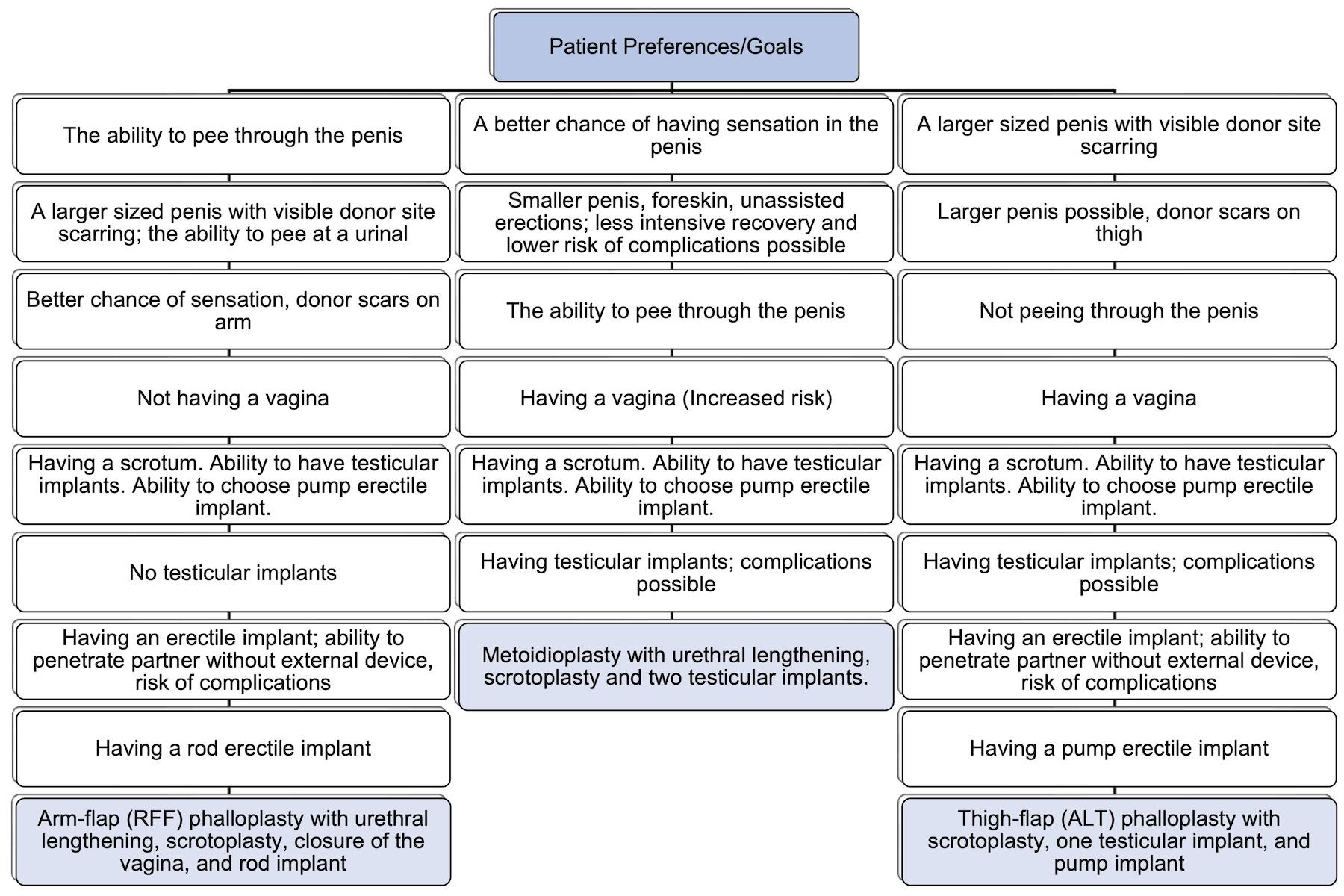BACKGROUND: Transgender male and gender non-binary patients seeking genital gender congruence through Metoidioplasty and Phalloplasty Gender Affirming Surgeries (MaPGAS) face complex decisions with significant life implications, and many patients struggle with decisional conflict. We aimed to develop a user-friendly, comprehensive web-based Decision Aid (DA), co-designed with community stakeholders, to facilitate informed, personalized decision-making and address a gap in patient decision support. METHODS: A mixed-methods approach incorporated semi-structured interviews and surveys with both potential MaPGAS patients and medical providers to identify key surgical outcomes and patient decisional needs and preferences. Interview feedback from patients viewing the DA was used for iterative DA revision. RESULTS: The DA uses patient-identified priorities, including genital sensation and standing urination, to narrow over 80 pathways to one of 68 potential surgical outcomes [Figure 1]. Information on each surgical outcome is presented based on literature review and high-volume surgeon Delphi consensus. The site also includes interactive modules for definitions and medical illustrations of key terminology [Figure 2]. The DA was modeled using Adobe XD, then moved to WordPress and made compatible with screen readers. Preliminary feedback from cognitive interviews highlighted the tool's depth, user-centered approach, and potential value for those at the outset of their MaPGAS journey. CONCLUSIONS: The novel MaPGAS DA is a promising tool for enhancing patient-centered decision-making. While initial responses affirm its utility, empathetic design, and thoroughness, further research is necessary to assess the feasibility of using the tool in a clinical setting, the usability of the tool for patients across various demographics, and the efficacy of the tool in reducing decisional conflict and preparing patients for productive consultations.

